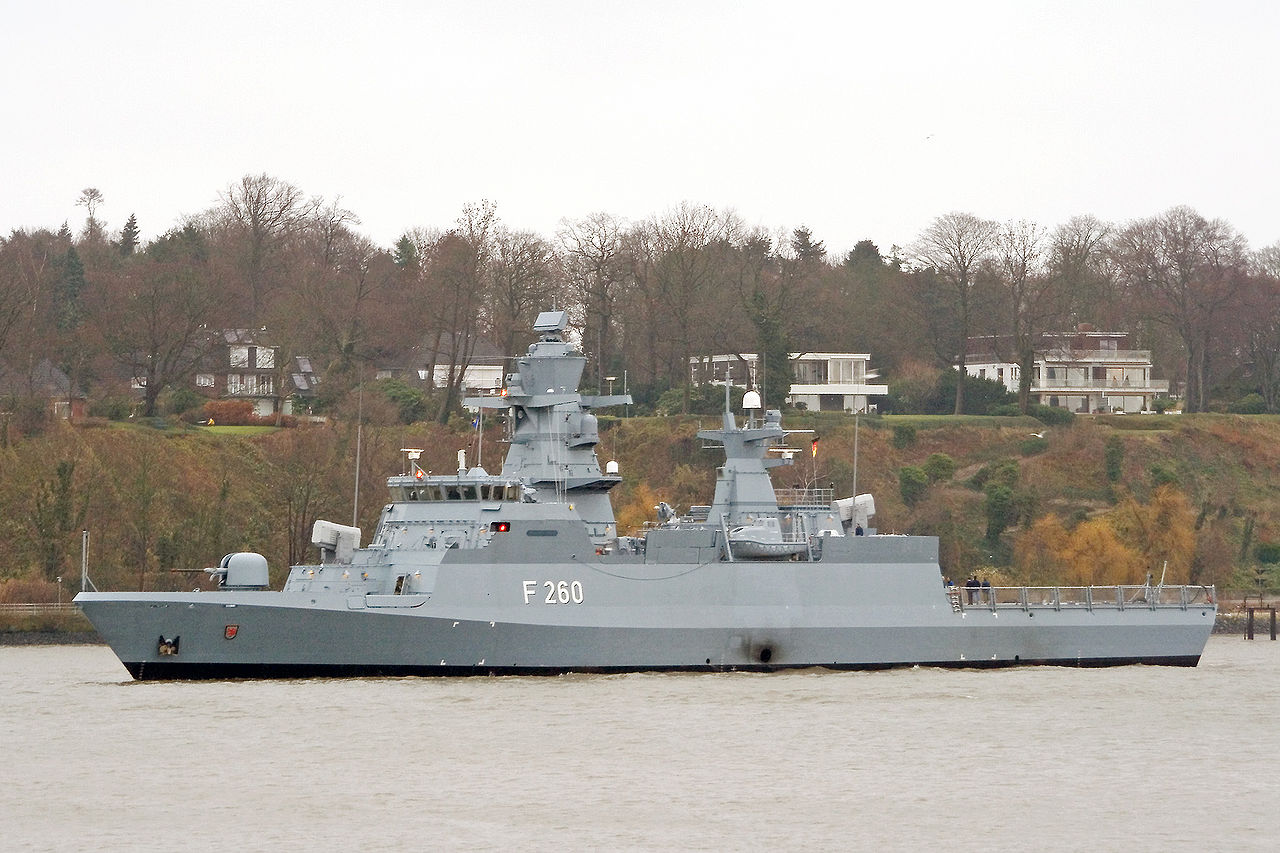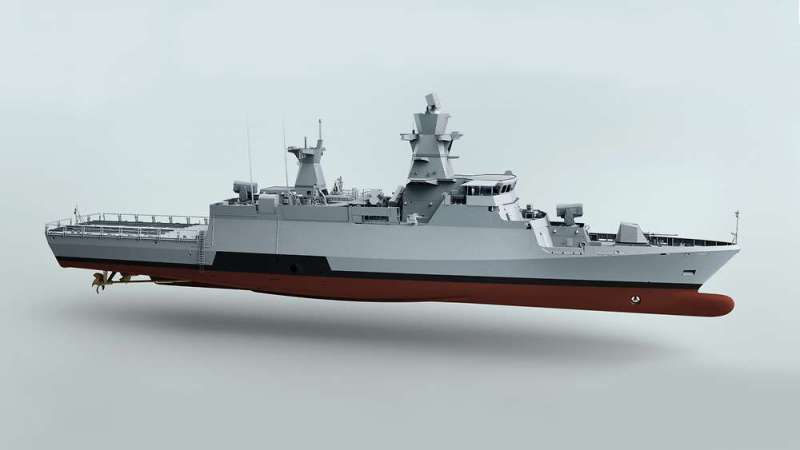The keel of the German Navy (Deutsche Marine) future K130 corvette (K130 Braunschweig corvette class ) Emden was laid at Lürssen’s Peene shipyard in Wolgast on 30 January, the Bundesamt für Ausrüstung, Informationstechnik und Nutzung der Bundeswehr (BAAINBw), Germany’s Federal Office for Bundeswehr Equipment, Information Technology and In-service Support, announced on its website on 31 January. Emden will be the seventh ship of the K130 corvette class. In October 2016 it was announced that a second batch of five more corvettes is to be procured from 2022–25. The decision was in response to NATO requirements expecting Germany to provide a total of four corvettes at the highest readiness level for littoral operations by 2018, and with only five corvettes just two can be provided.
The contract for first five ships was awarded in December 2001 Blohm+Voss, at that time owned by ThyssenKrupp Marine Systems, Nordseewerke, and Friedrich Lurssen Werft. The first ship, the Braunshweig, built at Blohm+Voss, was launched in April 2006 and was commissioned in April 2008. The second ship was commissioned in 2008. The third three ships were commissioned in 2013. Work on the sixth K130 corvette, Köln, began in February 2019. The other three are Karlsruhe, Augsburg and Lübeck. All five ships of the second batch of K130 corvettes are scheduled to be delivered to the German Navy by a consortium between Lürssen, Thyssenkrupp Marine Systems (TKMS), and German Naval Yards Kiel starting in 2022.

The K130 corvette feature reduced radar and infra-red signatures (“stealth” beyond the Sachsen-class frigates) and will be equipped with two helicopter UAVs for remote sensing. Recently, the German Navy ordered a first batch of 2 UMS Skeldar V-200 UAVs for the use on the Braunschweig-class corvettes. The hangar is too small for standard helicopters, but the pad is large enough for Sea Kings, Lynx or NH-90s, the helicopters of the German Navy. The German Navy states that these corvettes will be called ships nonetheless because of their size, armament and endurance. However, in size, armament, protection and role these corvettes resemble modern anti-surface warfare (ASuW) frigates, the main difference being the total absence of any anti-submarine warfare (ASW) related sensors or weapons.
Originally They was supposed to be armed with the naval version of the Polyphem missile, an optical fiber-guided missile with a range of 60 kilometres (37 mi), which at the time was under development. The Polyphem program was canceled in 2003 and instead the designers chose to equip the class with the RBS-15. While the RBS-15 has a much greater range —250 kilometres (160 mi)—, the current version mounted on the ships, Mk3, lacks the ECM-resistant video feedback of the Polyphem. The German Navy has ordered the RBS-15 Mk4 in advance, which will be a future development of the Mk3 with increased range —400 kilometres (250 mi)— and a dual seeker for increased resistance to electronic countermeasures. The RBS-15 Mk3 has the capability to engage land targets.
